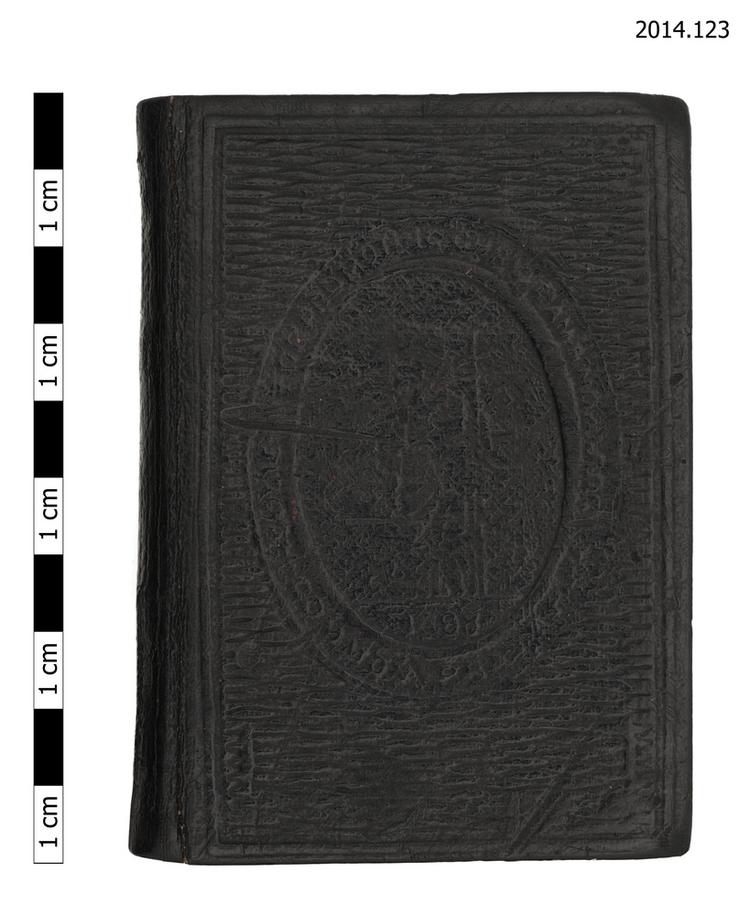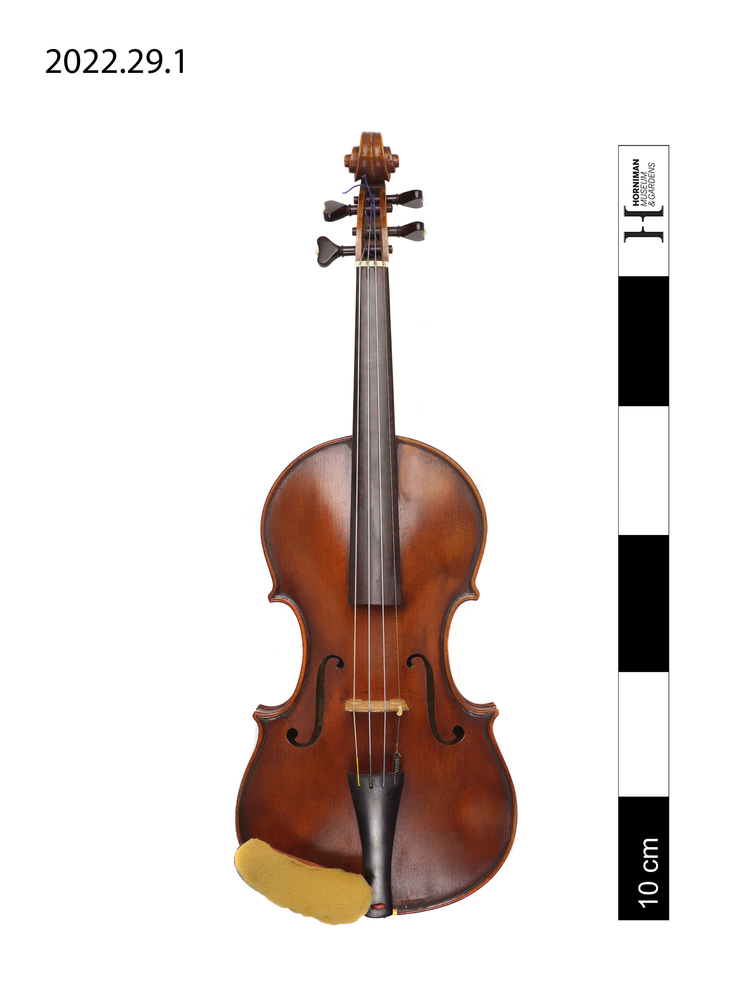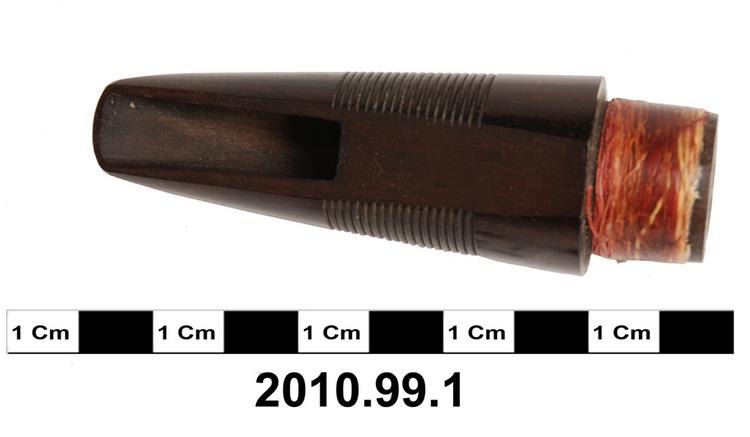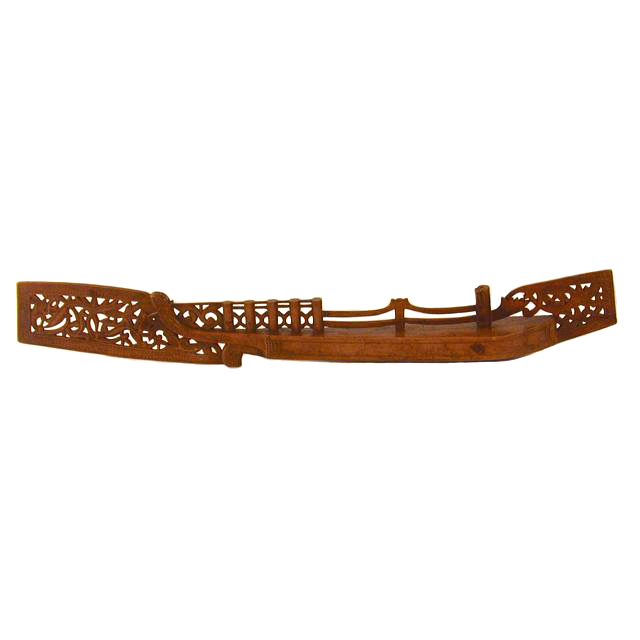
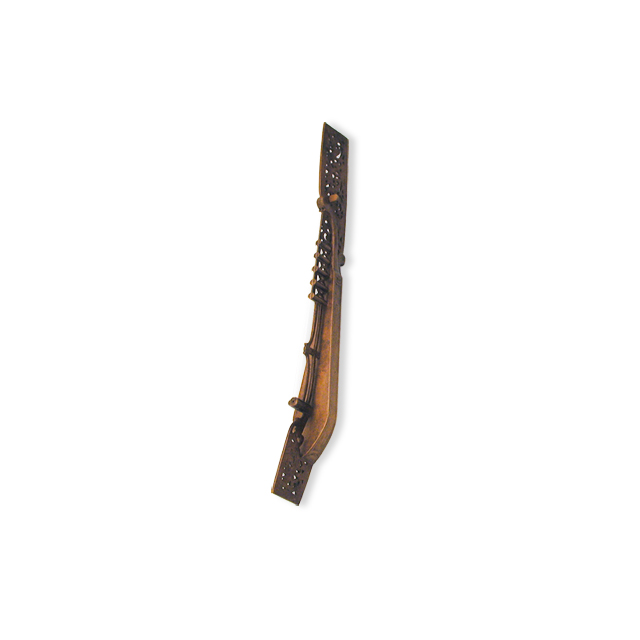
Kacapi, two-stringed lute. The instrument is carved from a single piece of wood except for a separate back which is pierced by three round holes. The body is boat-shaped and of a ribbed construction with a short neck extending to a sickle shape. The belly is recessed below the line formed by the elaborate creating, the head of the peg-box, a row of cylinders functioning as frets and a raised cylindrical tailpiece-bridge. A single gut string is looped and threaded round the tailpiece and the ends are attached to two lateral tuning pegs. The column-frets and the tailpiece are joined by simple fretwork, while the finials are more elaborately carved. The carving is intended to be seen from one side only, the lower side, if it is held lute-fashion, is plain. A line of script can be traced on the ribs on the plain side. This gives the impression of being a decorative piece and not a functioning musical instrument..




